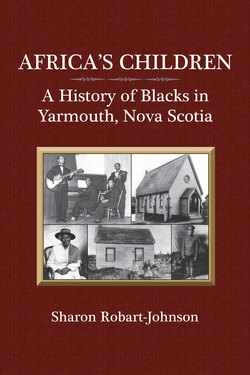Читать книгу Africa's Children - Sharon Robart-Johnson - Страница 9
На сайте Литреса книга снята с продажи.
ОглавлениеAUTHOR’S NOTE
When I began my genealogical and historical research in 1993, little did I foresee that today I would be attempting to put the most important part of my research, Black history, into book form. The work started in 2003 with the researching of the three cemeteries in what was once the all-Black community of Greenville, Yarmouth County, Nova Scotia. Of the three cemeteries, only one had monuments marking some of the graves. My insatiable need to know more and the sadness I felt each time I drove past these cemeteries grew. By then I knew that more than two hundred people were buried there, and that very few people living today knew very much about them.
So my journey into the land of the dead began. I have identified upwards of two hundred people buried in the three cemeteries who do not have monuments. Only one of these cemeteries, the African Bethel Cemetery (circa 1849–1949) has a distinct name. The other two are simply known as the Greenville Church Cemetery (circa 1853–1960) and the Greenville Cemetery (circa 1960–present). When I began researching material for this book, these first two cemeteries were not registered. As of November 7, 2006, they both became Municipally Registered Heritage Properties under the Heritage Property Act. The Greenville Church Cemetery is a Black cemetery. Because of my research, those buried in Greenville cemeteries now can be identified by name. This list cannot yet be accessed through the Yarmouth County Museum and Archives as I have not finished compiling it. It was because of the results of my research that I decided to go boldly where no man (or woman) had gone before. The leap from researching cemeteries to researching Yarmouth history in general was a short one. Having gone that far, why not see how much further I could go? Little did I know how much Black history there was in Yarmouth! Nor did I anticipate the various emotions that would surface during my journey into the past of the Blacks in Yarmouth. First, there was sadness prompted by the plight of many slaves living there from 1800 to the 1830s. This was followed by a raging anger at the injustice of Yarmouth’s justice system toward Black people during the nineteenth century.
As my research progressed and I passed through that period of slavery, the sadness and anger were at times countered by humour. I soon realized that if I were to finish this book, I would have to put those feelings to rest and concentrate on the hero factor and the success stories. For certainly, oppressed Blacks were heroes. One had to be to survive the hell that constituted their lives. I have learned much Black history and realize that there is yet more to discover as new information comes to light. I had not anticipated the various emotions that would surface during my journey into the past of the Blacks in Yarmouth, but this too has contributed to my understanding of the past. My personal name for this history, to borrow from another title, would be “The Good, the Bad, and the Ugly” for it is all there. The history of Black people in Yarmouth has never been written for the public, and it is long overdue. It has been overlooked, swept under the rug, ignored, and even denied. That time has come to an end.
It is important to note that the terms “coloured,” “Negro,” and “Black’ are used throughout in keeping with their historical context. Also, the irregular spellings found in many of the early newspaper articles have been maintained in their original form.
And finally, a note to consider concerning currency references. Between the years 1791 to 1810, the U.S. dollar value of a single British pound ranged from $4.10 to $4.75 (Canadian dollars did not exist at the time). To get an idea of relative worth, consider that having one pound in your pocket back then is more or less equal to having one hundred pounds in your pocket today. Or four hundred American dollars!
Sharon Robart-Johnson
Yarmouth, Nova Scotia
